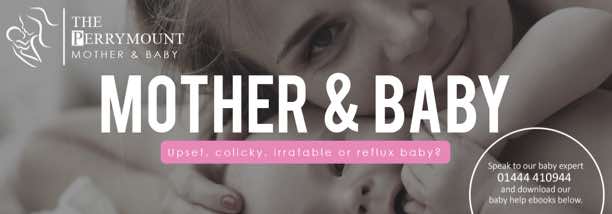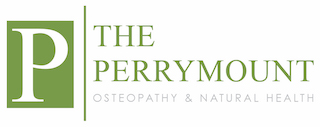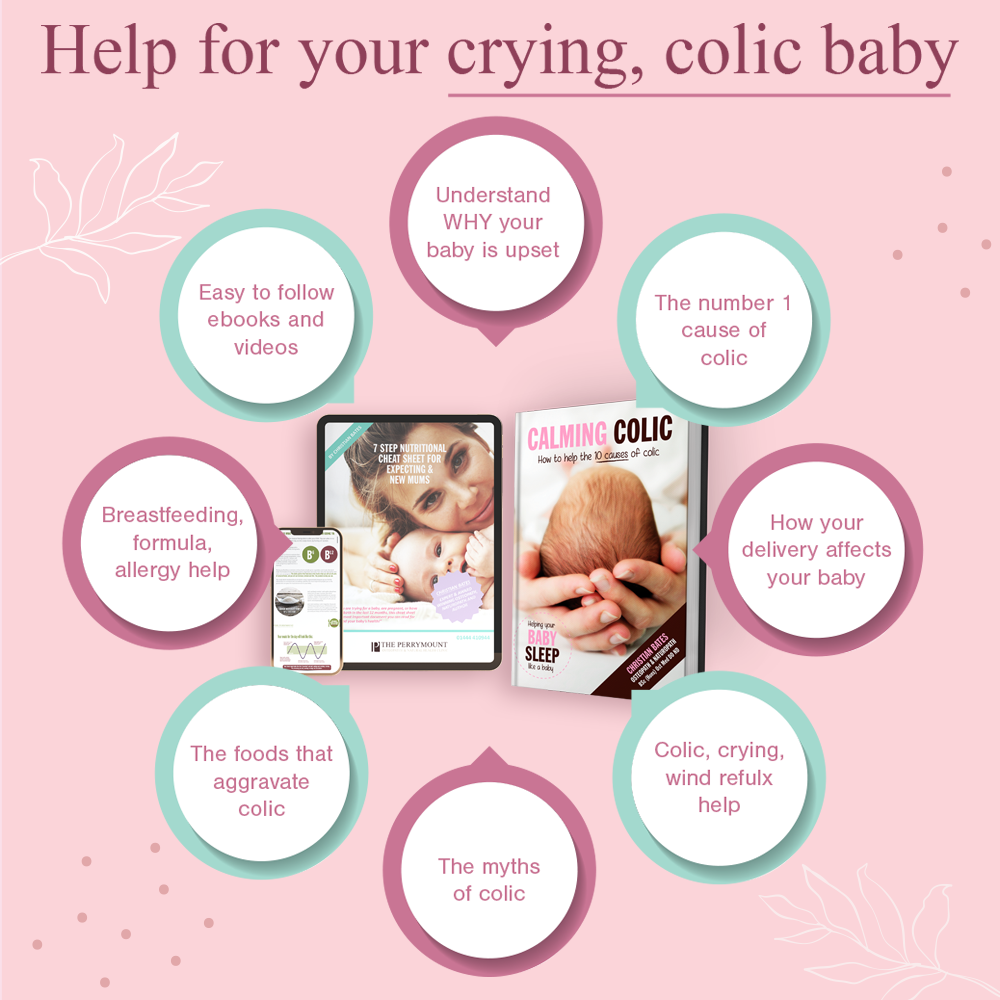Call to book or for more information 01444 410944

11 reasons your baby might be upset
Forceps or ventouse delivery
Both these instrument delivery types can leave tension in your baby’s head. This can be very noticeable if it has left your baby with a “cone head” or even bruising from the forceps. The skull has 26 bones and many, many joints between these bones.
You may notice that your baby has some head tensions if they are upset and crying and particularly they don’t like their head being touched on laying on the back of their head, or don’t like clothes going over their head, or having hats on. You will just know they are uncomfortable.
Breast feeding issues - Latch
Babies not latching well can be a major problem with them feeding correctly. I personally think there is another extremely common reason babies don’t breast feed well, more on that next. The bones of the baby’s head and face are obviously involved in their latch and their sucking. Particularly the jaw bone and the joint that connects the jaw to the ear bones and then all the bones and joints that are connected and associated to these bones. Basically the whole head and neck! If your baby has had a traumatic delivery, such as a forceps or ventouse delivery it may have caused some tightness in the bones associated with their latch. If the latch isn’t good then feeding can be difficult, painful and they can take air in and be colicky.
Breast feeding issues - position
I find this one of the most common causes of breast feeding difficulties. And it’s not the mothers fault! Very often after the intense pressures of labour and the time a baby has spent curled up in their mothers womb leaves them physically unable to find a comfortable position to lay in to breast feed well. Most babies really favour looking to the right side, some actually struggle to turn their head to the left at all. You may have noticed this, have a look for yourself.
If this is the case then your baby will find it hard to feed off your right breast as they can’t turn in to that side well. You would have to use a rugby ball hold to help this. But using a rugby ball hold is just a temporary fix and actually holding that pattern, when instead, by releasing tensions you can actually help the baby feed nicely whatever position they are laying in and turning their head to.
Constantly sucking
Babies that constantly suck, graze, snack or cluster feed can be a big cause of mothers giving up breast feeding due to pain and exhaustion. It is very common that these babies are sucking for comfort not because they are hungry. They can even throw up the milk they have drunk as they are full already.
A baby's sucking motion is calming to them and releases pain relieving chemicals and the sucking motion actually relieves tension in their head.
This is called non-nutritive sucking and has been proven to decrease stress in the baby and is used in hospitals, for example when babies need a blood test.
Your baby always wants to be held
Babies that need to be held and constantly rocked and shushed have often had a traumatic or shocking / surprising delivery. They may have had head irritation through instrument delivery but surprisingly they may have had a very fast delivery that has that has put them into a state of stress or anxiety, a bit like having too many coffee’s for an adult. They are often very light sleepers, or jumpy and need swaddling. I have found that babies that have been exposed to some sort of stress around or just before delivery can be like this too. Babies that have had a planned C-section are particularly like this.
The delivery was stressful
I realise that all deliveries have a element of stress but some can really have more than others. If an emergency C-setcion is needed or if instruments have to be used, or perhaps the baby was born naturally but the delivery was long, or extremely fast then it could be felt as stressful to the mother.
This study found that the stress levels in a baby remain consistent in them for 2 months:
https://www.ncbi.nlm.nih.gov/pubmed/15957993
They are a Meerkat baby (have a stiff back that arches)
I call babies that have a strong neck a "Meerkat baby" . When you hold them up on your shoulder they lift their head up seeming like they have a “strong” neck. Little babies don’t really have a strong neck, it’s more that they are stiff. They can really arch backwards and throw themselves away from you so you have to hold onto them tight.
The delivery these babies have had is usually quite long and they may have got stuck or even been very low down and engaged for a longtime prior to the actual delivery. All it means is that they have spent a long time with their head having contractions on as they curve down the birth canal. They have basically stayed in this compressed shape. This can make them cranky and upset and not sleep. They may not like laying down on their back. It is much better when these babies are nice a soft and more relaxed and calm in your arms.
They are a Little Frog baby (always have knees curled up in a little ball)
So many parents nick name their baby a “Little Frog”. These babies have their knees up all the time and want to be on your shoulder with their knees tucked up and under. If you put them on their back their legs come up and can even drop to the side so they lay on their side.
When the baby is in a their mothers womb they are curled up in this frog position, or foetal position. The delivery process down the birth canal actually stretches them out. However, if the delivery was very fast (usually a second or third baby) or was a C-section then the baby doesn’t get stretched out so they stay in a little ball.
It’s very helpful to have these babies “unwound” so their legs drop down and they are straighter and seem longer. Can you picture that when you feed your baby so its tummy is full of milk and they then bring their knees up the milk won’t be able to comfortably pass through their tummy? Some babies bring their knees up so much it can actually push the milk back out and reflux it. Also if there are other factors causing your baby to create lots of wind then this will become easily trapped if their knees are being pulled right up. This could give them colicky wind pain.
Planned C-section
I spoke about “little frog” babies after C-section. This is especially true of planned C-section babies but planned C-section babies also commonly have other issues so they get a section to themselves (no pun intended).
Planned C-section babies can be very ratty! Just constantly upset, crying and not happy and no smiles. :-(
I put this down to the way that they have had a surprising entry into the world with no warning. Picture yourself in bed fast asleep and at 2 am someone comes in, pulls the duvet off, switches the light on and throws a bucket of water over you! That could be what it’s like for a baby coming into the world when they are pulled out into the operating theatre.
Let me describe a C-section baby to you. They aren't all like this of course but it may hold true for you. C-section babies can be on edge and ratty. They can be “wired”, jumpy, not going into a deep sleep and they wake at the slightest noise. They may also sleep better if they are swaddled as their own jumpiness can wake them up.
Can't make it in to clinic to have a baby treatment? Then try Christian's online colic solution. Learn more here:
Just have a check up!
Many parents hear through personal recommendation from other parents how fantastic cranial-sacral is and bring their baby in for a check up soon after delivery. The treatment in this case just simply checks the alignment of their baby. They may have had extreme pressures through the delivery process which leaves them in a little ball, or arching stiffly or even bending to one side like a banana. The treatment gently unwinds them so they are straight and happier.
If you would like to book your baby in for help please call The Perrymount on 01444 410944. The list of issues described here is not the be all and end all, there are many other factors that can upset your baby.
Frequently Asked Questions about treatment for your baby
Does cranial hurt my baby?
No! Most certainly not; Cranial Osteopathy is EXTREMELY GENTLE. In fact it is so gentle that most parents wonder how on earth it works as you can’t see me doing much. WE LOVE THIS! Why? Because it means that I HAVE to rely even more so on great results to get new clients.
How does Cranial Osteopathy work?
In the most simplified way, Cranial Osteopathy gently removes the tensions of birth or some other trauma from a baby (or toddler, or adult). Cranial Osteopaths are trained in techniques that work WITH your baby to speed up the natural healing process.
Osteopaths believe that the “structure” of the human body plays a role in the “function” of the human body. For example, if a baby is still screwed up in a little ball, like they often are after a C-section then this will affect how their insides function, maybe creating more wind or reflux. By helping a baby straighten out using cranial osteopathy then the bowel function improves. We all work better when our spine is neutral, relaxed and moving well.
What do I need to prepare for the treatment?
Not much really, well except all the bags, bottles, spare clothes, muslins and nappies you usually carry! Just come prepared as you normally would with your baby. If you are bringing a toddler you can bring their favourite toy, but we actually have toys, paper and crayons at the clinic.
What if my baby needs to feed?
This is no problem - either your baby can feed or have a dummy whilst having the treatment. Whatever is good for your baby - we will work around that. If you breastfeed then we usually have a room you can feed in either before or after the treatment.
What if my baby cries?
No problem! Crying comes with the territory of having babies in the clinic. The Cranial Osteopathy is actually very relaxing and most babies will settle whilst having the treatment. Not always, it is babies we are dealing with here after all!
If you have more please just email or call reception on 01444 410944. Very often reception can answer your questions as they are an integral part in helping you and your baby and making you feel welcome at The Perrymount.

